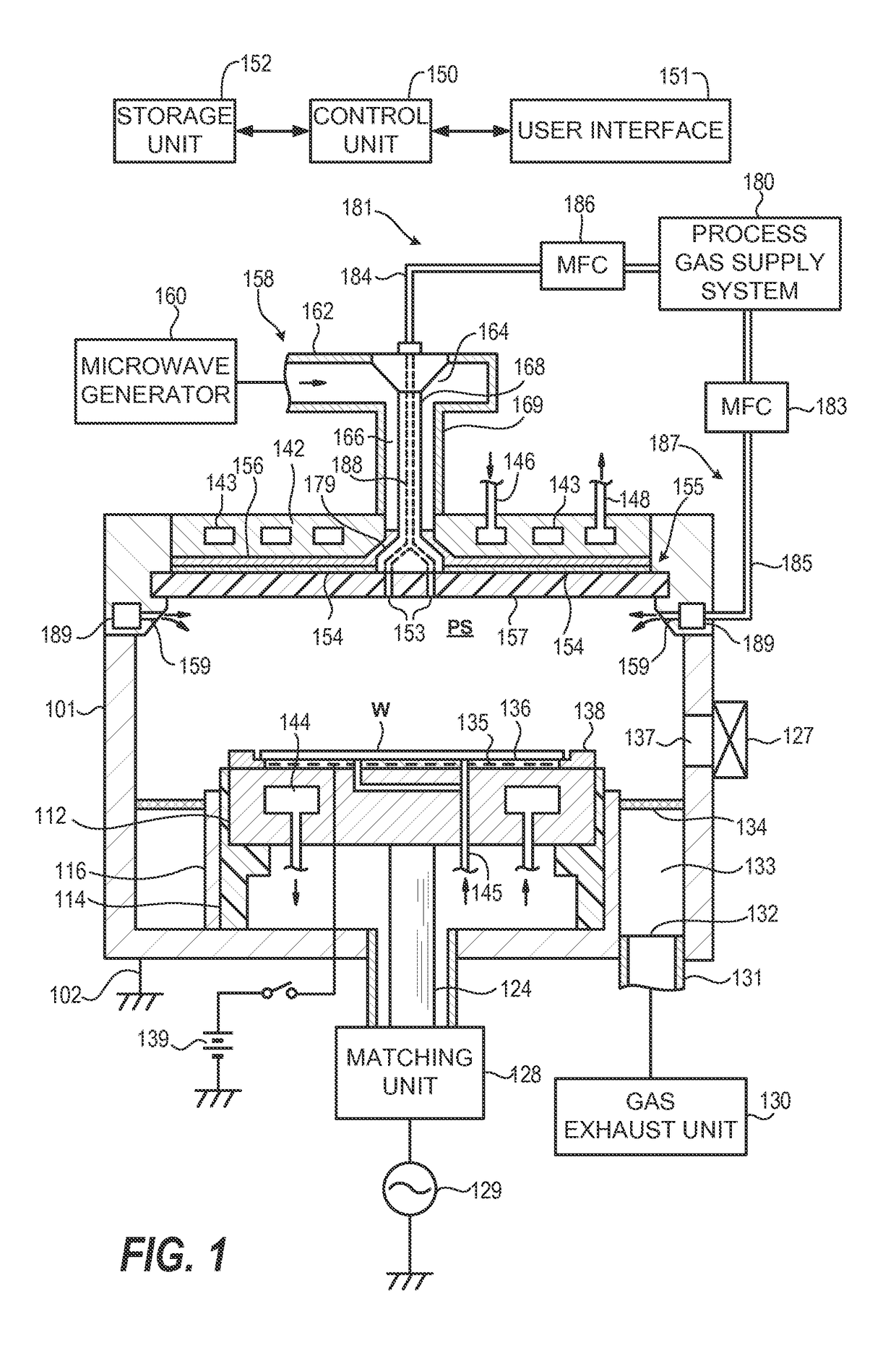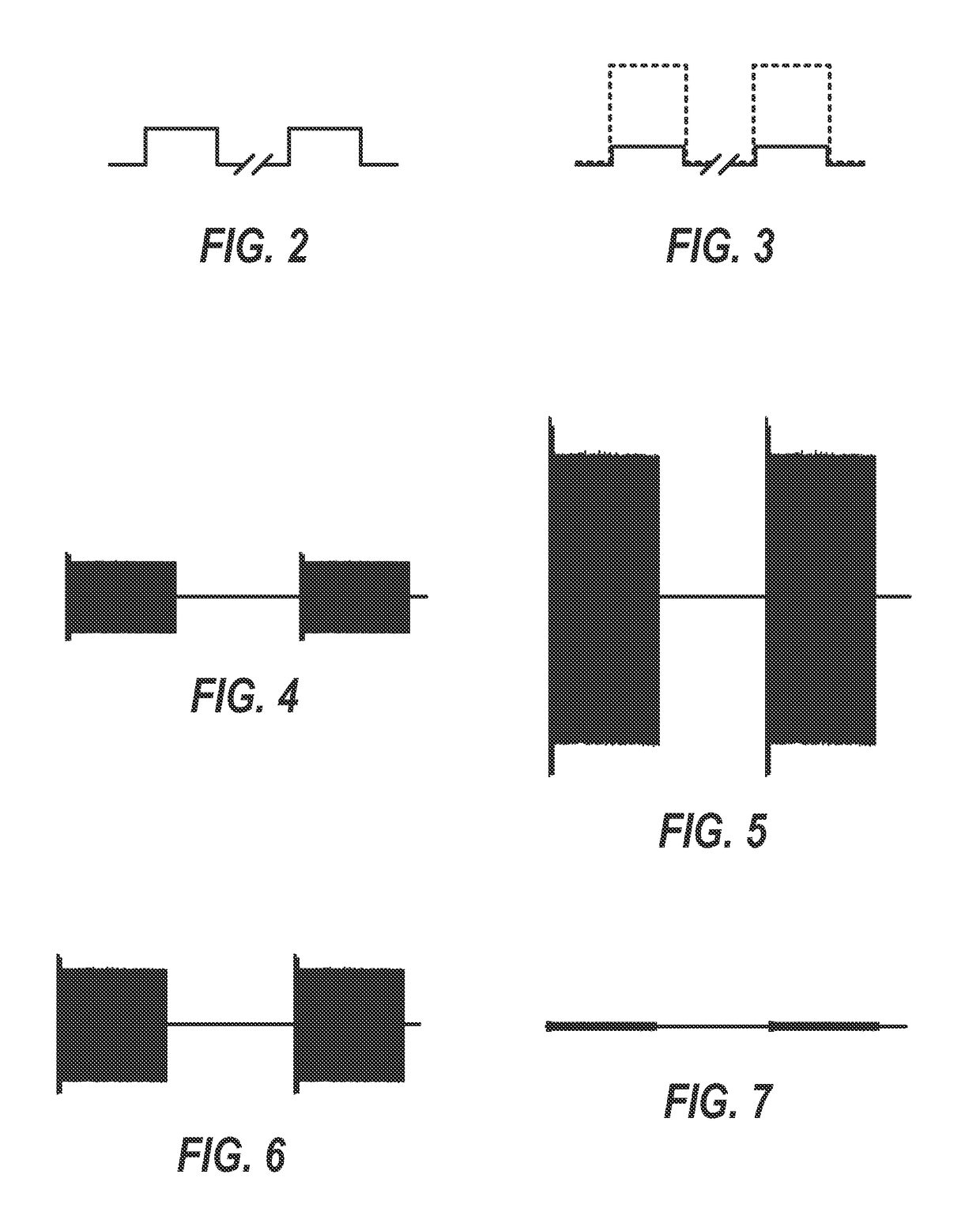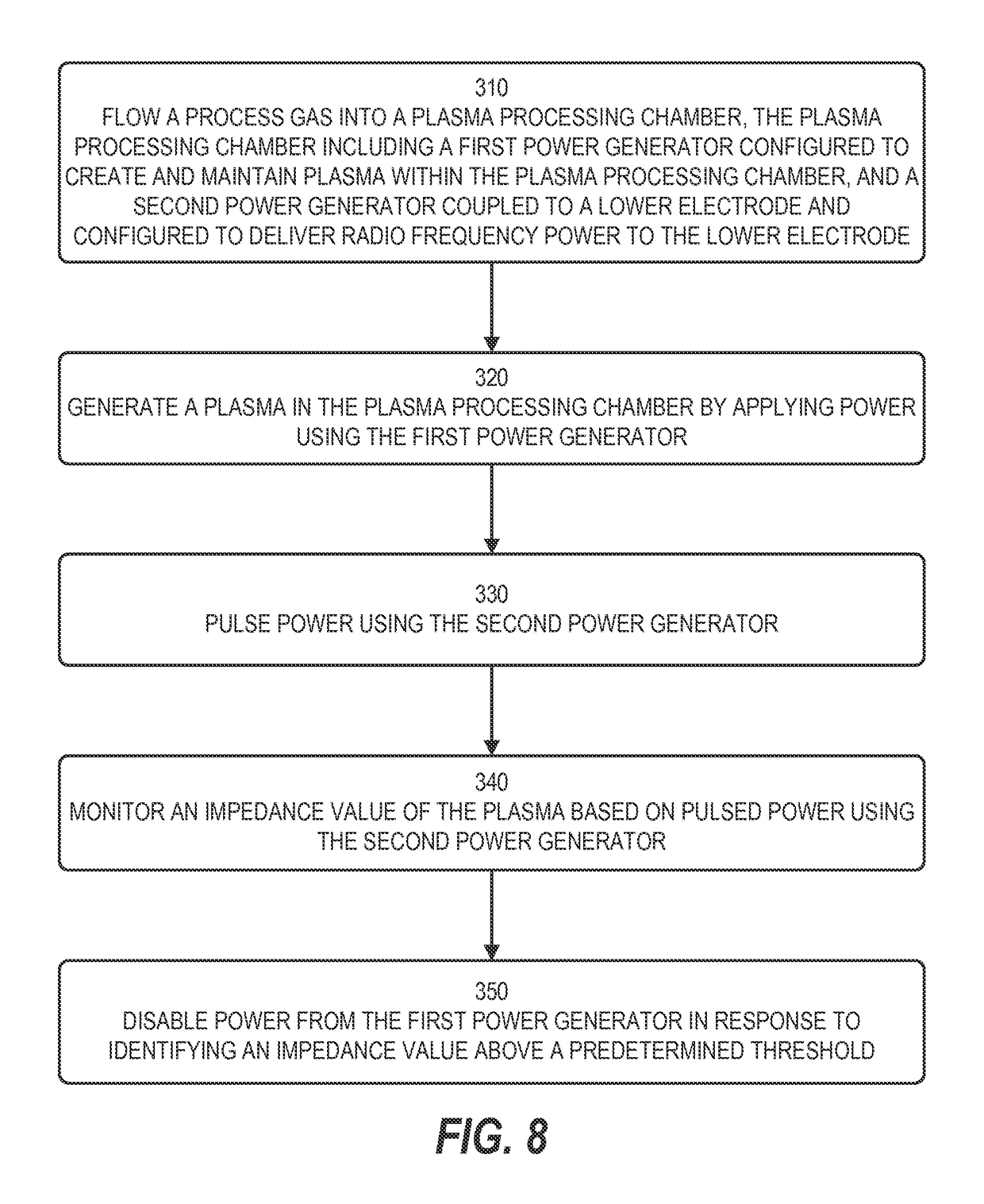Method of detecting plasma discharge in a plasma processing system
a plasma processing system and plasma technology, applied in the direction of resistance/reactance/impedence, electric discharge tubes, instruments, etc., can solve the problems of plasma discharge detection, inability to distinguish between different types of light and plasma discharge, and inability to form a population of charged species and chemical reactive species necessary for performing the function of the plasma processing system, etc., to prevent damage to substrates and chamber components.
- Summary
- Abstract
- Description
- Claims
- Application Information
AI Technical Summary
Benefits of technology
Problems solved by technology
Method used
Image
Examples
Embodiment Construction
[0018]Techniques herein include applying a modulated low-power signal (“probe signal”) to an electrostatic chuck (ESC) from a bias power generator. A peak-to-peak (Vpp) voltage signal response or radio frequency (RF) current response is then monitored. The presence or absence of bulk plasma will result in different Vpp or RF current values, which indicate whether a plasma is detected.
[0019]Conventionally, various techniques have been implemented for exciting a gas into plasma for the treatment of a substrate during semiconductor device fabrication, as described above. In particular, (“parallel plate”) capacitively coupled plasma (CCP) processing systems, or inductively coupled plasma (ICP) processing systems have been used for plasma excitation. Among other types of plasma sources, there are microwave plasma sources (including those utilizing electron-cyclotron resonance (ECR)), surface wave plasma (SWP) sources, and helicon plasma sources.
[0020]Some plasma reactors are known as sur...
PUM
 Login to View More
Login to View More Abstract
Description
Claims
Application Information
 Login to View More
Login to View More - R&D
- Intellectual Property
- Life Sciences
- Materials
- Tech Scout
- Unparalleled Data Quality
- Higher Quality Content
- 60% Fewer Hallucinations
Browse by: Latest US Patents, China's latest patents, Technical Efficacy Thesaurus, Application Domain, Technology Topic, Popular Technical Reports.
© 2025 PatSnap. All rights reserved.Legal|Privacy policy|Modern Slavery Act Transparency Statement|Sitemap|About US| Contact US: help@patsnap.com



